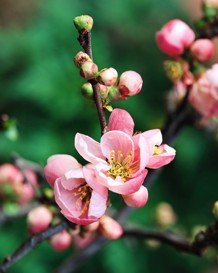|
Welcome the Season of Renewal with Spring Celebrations
Spring celebrations are a time of birth and renewal and new beginnings. Winter is over, the snow has melted, and the earth comes to life once again. The air is warm and fragrant with spring flowers and trees. Grass is visible and leaves are turning green. Birds and wildlife have returned from their winter hiatus and nature begins to bud and bloom. There is a sense of hope and promise, as life begins anew. The Spring Equinox is the major spring celebration, followed by Beltane in May. Spring Equinox/Ostara – Around March 21st. Known as the first day of spring. Also called the vernal equinox, “ver” in Latin refers to springtime.
The theme of this holiday is the celebration of spring. Historically, spring celebrations around the time of the equinox have been celebrated throughout the world in many different cultures as an auspicious time of new begninnings. The spring equinox is a turning point in the wheel of the year. It is a time of rebirth, new life, and change. It is also a festival of fertility and resurrection. In Neopaganism, this festival is referred to as Ostara and celebrates the maturity of the Sun God and the return of the Goddess in all her glory and splendor from the underworld of winter darkness. This spring celebration has associations with the Christian holiday of Easter and the resurrection and ascension of Jesus Christ. It is also associated with the Roman Goddess Aurora and the Greek goddess Eos. The Spring Equinox is celebrated with baskets and garlands of fresh flowers, particularly lilies and daffodils. Seeds are gathered and prepared for planting. Eggs are a quintessential symbol of fertility, and decorated eggs are often hung from trees outside in pastel colors of yellow, pink, green, lavender, and blue. Holiday fare may include twisted bread, honey cakes, and devilled eggs.
The significance of the equinox itself -- An equinox is the point or moment at which the center of the sun is directly above the earth’s equator, spending an equal amount of time above and below the horizon at every point upon the earth at once. Day and night are traditionally thought to be equal and in balance, but this phenomenon actually refers to equiluxes, not the equinoxes. (Equiluxes are the days where sunrise and sunset are closest to being exactly 12 hours apart) Equinoxes are opposite to each other in the Northern and Southern Hemispheres. In other words, the Fall Equinox in the Northern Hemisphere is the Spring Equinox in the Southern Hemisphere, and vice versa. Solstices, equinoxes, and moon phases were very important in the ancient world and were associated with planting and harvesting seasons, in the drawing up of calendars, and in migratory habits of people who were often nomadic in nature.
Earth Day -- April 22nd. Although earth day is not traditionally part of the pagan wheel of the year, it is being included here anyway because it is a time to celebrate our connection to the planet and to recognize the need for sustainability and eco-conscious change, as well as a good time to implement real action to help the planet. The first earth day was celebrated in 1970 and it seems to keep growing as people all around the world become more aware of environmental and nature conservation issues. To learn more, visit earthday.org.
Beltane – May 1st. (pronounced bi-ahl-ton). Beltane is the Gaelic word for May. It is a traditional Celtic/Irish festival that marks the beginning of summer. It is also a celebration of fertility, sexuality, and passion or consummation. The theme is one of growth and ripening before the abundance and blooming of summer. It is a continuation of the quickening of energies that occurred with the spring equinox. Nature is now fully awake: life energies have been activated and are visibly flowing throughout the natural world. It is the beginning of manifestation on the physical and earthly plane, when things come into being. In the Neopagan tradition, it is a celebration of the union of the Goddess and the God, as the God becomes fully mature and falls in love with the Goddess. The Goddess, also sometimes referred to as the May Queen, takes the God/Green Man to be her consort. In Ireland, Scotland, and Wales, Beltane is a fire festival celebrated with the lighting of bonfires and the herding of livestock out to pasture. In Europe and the US, dancing around the Maypole is part of the celebration.
Click here to return from Spring Celebrations to Seasons of the Year
|







